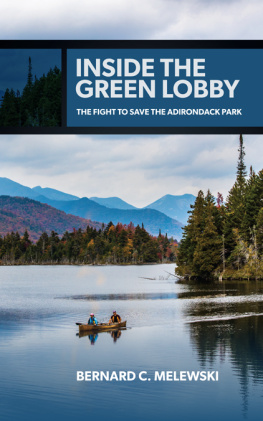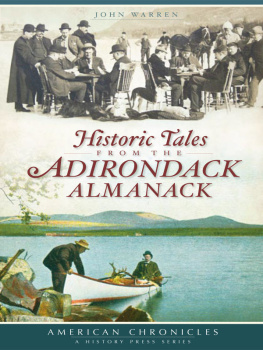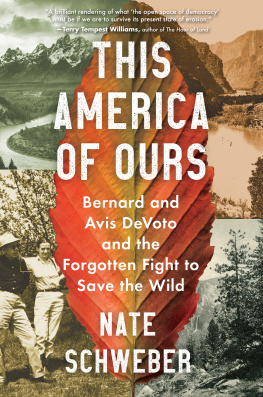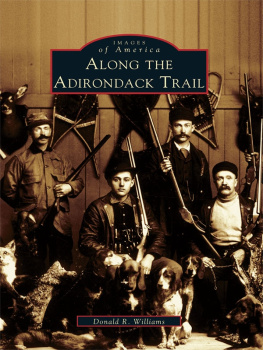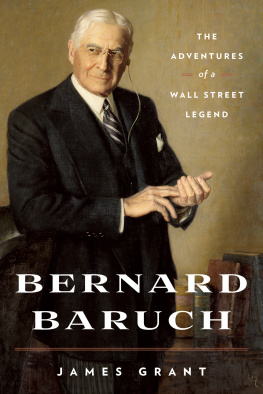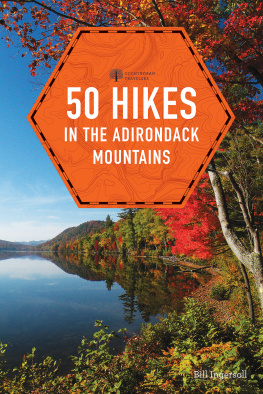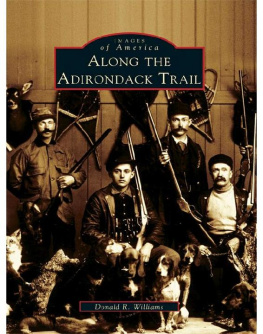INSIDE THE
GREEN LOBBY
INSIDE THE
GREEN LOBBY
THE FIGHT TO SAVE THE ADIRONDACK PARK
BERNARD C. MELEWSKI
Front cover: 2019 Nancie Battaglia, all rights reserved.
Back cover: Starry Night in the Moose River Plains. 2021 Carl Heilman II,
Wild Visions, Inc.
Published by State University of New York Press, Albany
2021 State University of New York
All rights reserved
Printed in the United States of America
No part of this book may be used or reproduced in any manner whatsoever without written permission. No part of this book may be stored in a retrieval system or transmitted in any form or by any means including electronic, electrostatic, magnetic tape, mechanical, photocopying, recording, or otherwise without the prior permission in writing of the publisher.
For information, contact State University of New York Press, Albany, NY
www.sunypress.edu
Library of Congress Cataloging-in-Publication Data
Name: Melewski, Bernard C., author.
Title: Inside the green lobby : the fight to save the Adirondack Park / Bernard C. Melewski.
Description: Albany, NY : State University of New York Press, [2021] | Series: Excelsior editions | Includes index.
Identifiers: LCCN 2021012590 | ISBN 9781438486697 (hardcover : alk. paper) | ISBN 9781438486680 (pbk. : alk. paper) | ISBN 9781438486703 (ebook)
Subjects: LCSH: EnvironmentalismNew York (State)Adirondack Park. | Adirondack Park Agency (N.Y.)History. | Green movementNew York (State)Adirondack Park. | Environmental policyNew York (State)Adirondack Park. | Land useNew York (State)Adirondack Park.
Classification: LCC GE198.A2 M45 2021 | DDC 320.5809747dc23
LC record available at https://lccn.loc.gov/2021012590
10 9 8 7 6 5 4 3 2 1
This book is dedicated to Mollie, our sons Matt and Dan,
and to their children and their childrens children.
May they all enjoy the wild places that
have been preserved for them.

Figure D.1. Ansa at dusk on Lake Mohegan Source: Matthew Melewski.
CONTENTS
ILLUSTRATIONS
Figure D.1 Ansa at dusk on Mohegan Lake.
ACKNOWLEDGMENTS
I want to thank my fellow staff members at the Albany office of the Adirondack Council: David Greenwood, Scott Lorey, Lisa Genier, Radmila Miletich, and John Sheehan. They were all very willing to recount with me the adventures we had together. In particular, Lisa gave generously of her time to help identify people, places, and events. Tyler Frakes of the Council provided key research assistance. The recollections of William Wild Bill Cooke were also appreciated.
Dr. Michael Wilson encouraged me years ago to write this book. Despite this, I still consider him a friend. Early on, I received thoughtful advice from Carol Melewski, a dedicated librarian and her husband, my favorite brother, Peter.
My primary editor, Arthur Dalglish of Boulder, Colorado, a retired copy editor for the Washington Post, took my drafts and shaped them up significantly. I deeply appreciate his professional assistance.
Finally, I am grateful to have worked for fifteen years with all the staff, interns, members of the board of directors and supporters of the Adirondack Council, whose dedication to the protection and enhancement of New Yorks largest park is beyond commendable. I also wish to acknowledge the staff of many other environmental organizations, large and small, with whom I have had the pleasure of working on many issues over many years. Their contributions to the protection of our natural resources have been invaluable to the people of the State of New York.
All photographs, unless otherwise identified, are by Nancie Battaglia, an extraordinary photographer working in the Adirondacks. Special thanks to Carl Heilman II, who contributed one of his outstanding Adirondack photos.
INTRODUCTION
December was a time of transition for the professional staff in the State Assembly and Senate. The members of both houses were up for election every two years. In law, that meant that every two years a new legislative body took their seats. The reality was somewhat different. The vast majority of members of both houses were reelected time after time. They held the benefits of incumbencyready access to their constituents, free mailing privileges, and staff members who not only solved small problems for folks in their district but often worked as campaign staff at election time. Senior staff in both houses would joke with each other that they did not work for the Democrats or Republicans, but for the incumbent party.

Figure I.1. A locator map of Adirondack Park. Source: Adirondack Council.
This working fiction of a new legislative body every two years produced some interesting twists. Under the legislatures ethics rules at the time, staff members were prohibited from lobbying on issues they had handled while in the legislature, until the next legislative session convened. But if you left on December 31, the day before the next legislative session convened, you could begin working as a lobbyist immediatelyon the same issues you had been assigned and with the same staff and members you had been working with, perhaps for decades.
It had been five years since I had taken my environmental advocacy and lobbying skills from the private sector to the state, becoming counsel for the New York Legislative Commission on Solid Waste Management.
I enjoyed my job and my status as a senior staffer in the State Assembly. But it was apparent to me that the Solid Waste Commission had completed its primary taskto close leaking landfills and to set the state in a new direction of reuse and recycling. The task going forward was to find the money to carry out the new state policies. I was not the only one who felt that way, and several of my colleagues had already left for greener pastures.
Despite my feelings that it was time for a career change, I decided to stay with the commission into the New Year. Two months into that next legislative session, our executive director, Richard D. Morse, called me into his office and told me that an environmental group in the Adirondacks wanted to establish a lobbying presence in Albany and had approached him about the job. He asked me, as a friend, for advice. I urged him to get an opinion from the Assemblys Committee on Ethics and Guidance before making a decision.
I thought that he might have problems because he also worked as a senior staffer advising the Assembly speaker on any number of environmental issues, including the Adirondacks.
Sure enough, Rick confirmed that the ethics committee had issued an opinion that he should avoid working for two years on exactly the issues for which the environmental group wanted a lobbyist. It was disappointing, Rick said, but the group was moving on in its search.
Do you know anybody I could suggest to them? he asked.
What about me? I replied, to my own surprise.
I had no ethical conflict under the rules. My work had been all garbage, all the time.
The group looking for help turned out to be the Adirondack Council. The Council was created with one overriding mission: To ensure the ecological integrity and wild character of the Adirondack Park.




